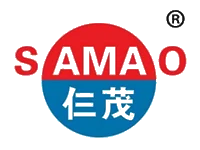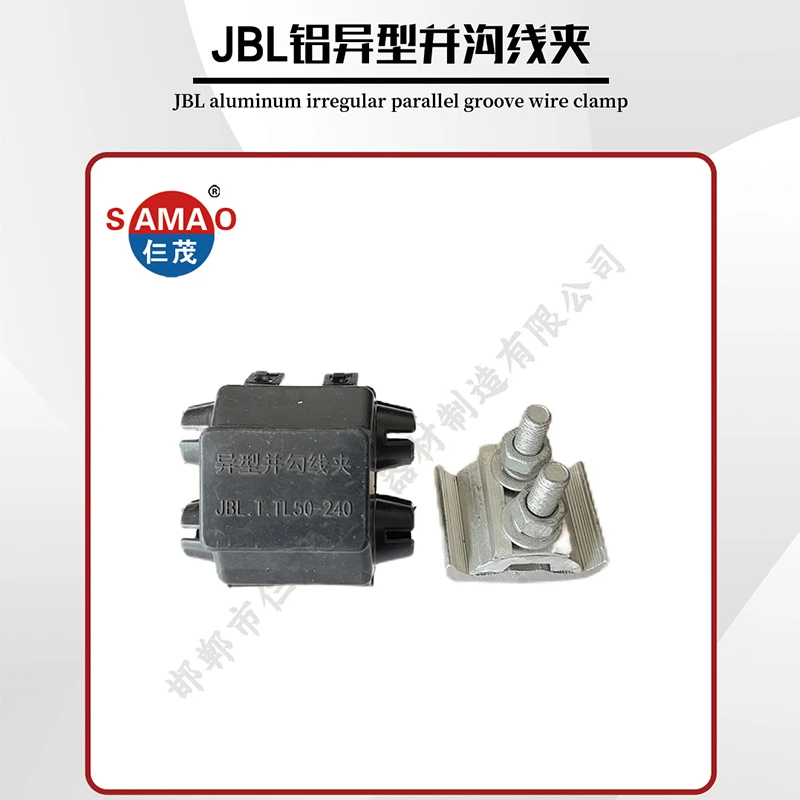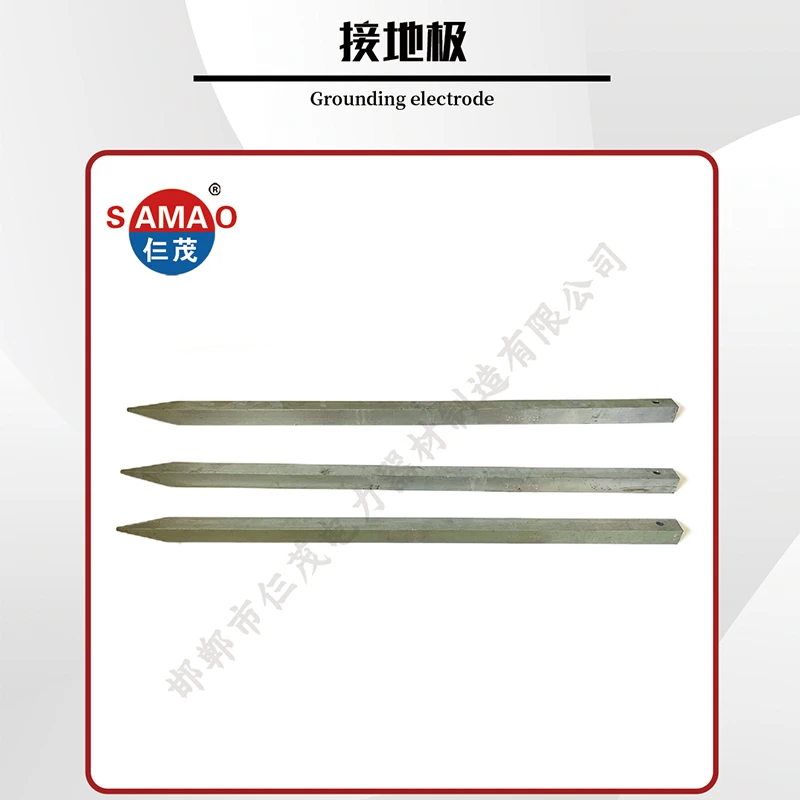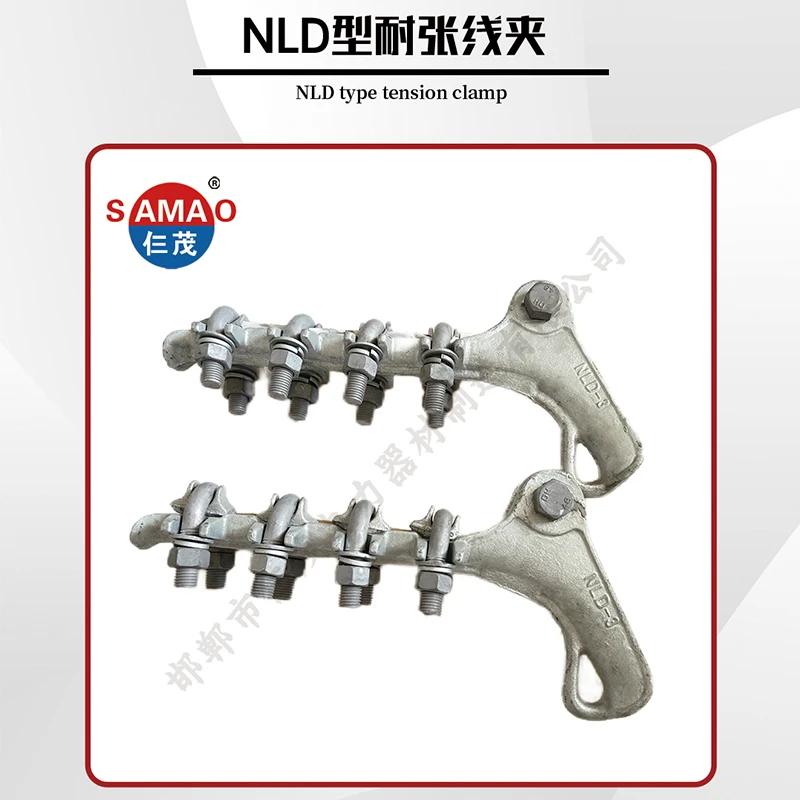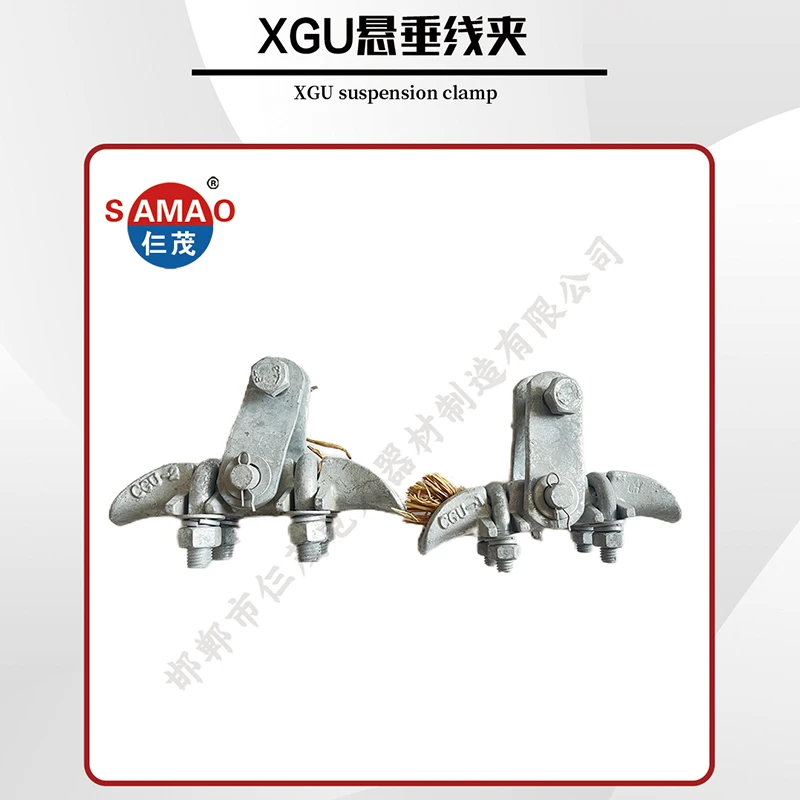Wire Cable Stop Clamp: Secure Cable Fixing Solution
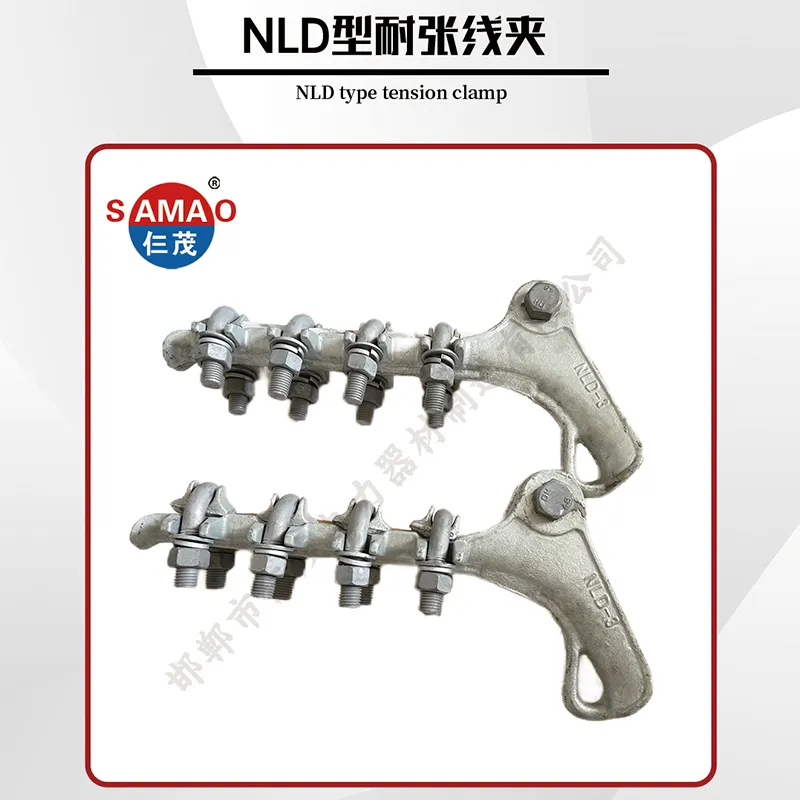
Industry Landscape & Emerging Trends for Wire Cable Stop Clamp
The global wire and cable accessories market, including wire cable stop clamp solutions, is set to exceed $6.5 billion by 2027 (MarketsandMarkets, 2023). Growth drivers include infrastructure upgrades, demand for uninterrupted energy, and digitalization of utility networks.
- Material Innovation – Rise in high-strength aluminum alloys & anti-corrosive stainless steels.
- Smart Grid Integration – Clamps supporting sensor/IoT hardware for real-time monitoring.
- Eco-Compliance – Most clamps now comply with ISO 14001 environmental criteria.
- Customization – Demand for made-to-order strain clamp for overhead line per site specs.
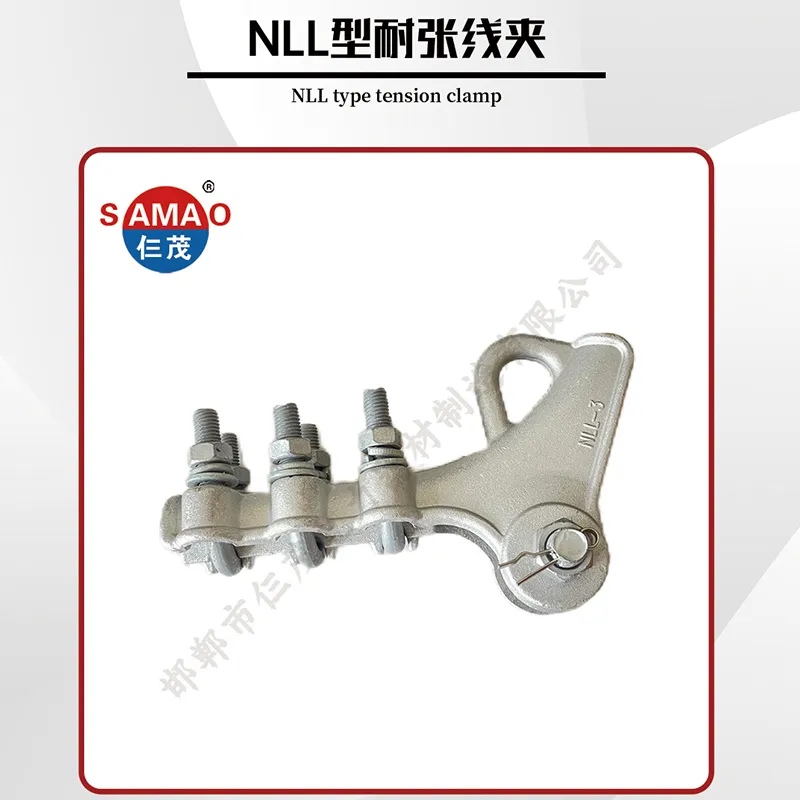
What Is a Wire Cable Stop Clamp?
A wire cable stop clamp—also known as a tension lock clamp or cable relief clamp—is a mechanical device that provides end termination and firm anchoring for conductors or cables, transferring tensile loads to a support structure without slippage. These clamps are critical in overhead line distribution, telecom masts, substations, and industrial cable trays.
Technical Specifications – Wire Cable Stop Clamp
| Parameter | Value / Range | Standard | Explanation |
|---|---|---|---|
| Ultimate Tensile Strength | 20 – 120 kN | IEC 61284 / ANSI C119.4 | Max load before failure |
| Cable Diameter Range | 8 mm – 32 mm | ISO 2768-m | Accommodates standard conductor sizes |
| Material | Aluminum Alloy, Ductile Iron, Stainless Steel | ISO 898-1 / ASTM A536 | Corrosion resistance & mechanical strength |
| Finishing | HDG, Anodized, E-coat, Raw | - | Anti-corrosive surface treatments |
| Service Life | ≥ 30 years | ISO 9227 / ASTM G85 | In accelerated salt spray tests |
| Certifications | ISO 9001, ANSI C135.1, CE | - | Assures process & product quality |
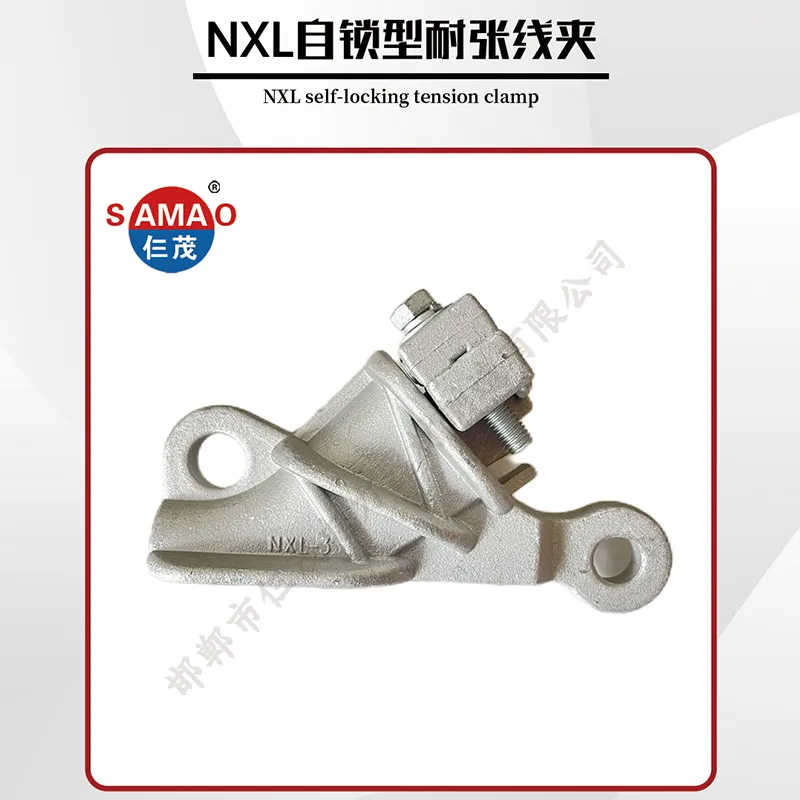
Comparative Technology Index: Tension Clamp vs Strain Clamp vs Dead-End Clamp
2023 Global Usage Share of Cable Clamp Types
Application Scenarios: Where Wire Cable Stop Clamp Shines
- Overhead Transmission Lines – End-of-span, tensioning, and anti-vibration support.
- Substation Gantry & Switchyards – Termination for busbars and accessories.
- Industrial Process Plants – Reliable cable managing across chemical, petrochemical, and metallurgy pipelines.
- Water Supply & HVAC Facilities – Cable relief clamp secures motor and field wiring against pullout.
- Telecom & Signal Networks – Ensuring low-loss optical and power cable runs.
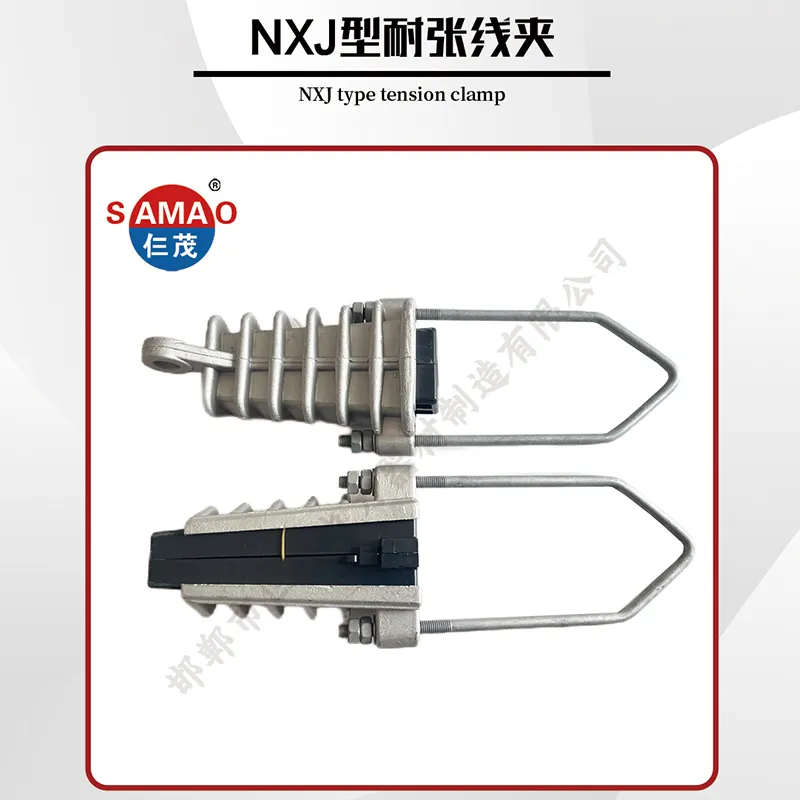
Manufacturing Process of Wire Cable Stop Clamp
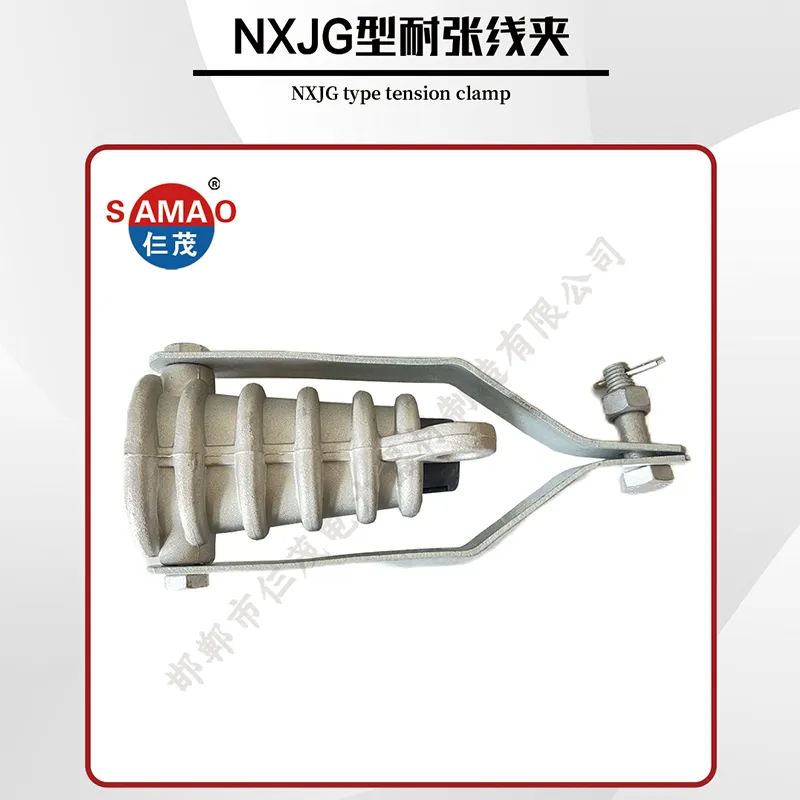
Core Technical Advantages
- Anti-Slip Jaw Design: Toothed or serrated jaws provide torque arms preventing cable pull-through under surges.
- High Corrosion Resistance: Pass >1,000 hours salt spray (ISO 9227/NSS), exceeding industry benchmarks.
- Wide Temperature Service: Maintains mechanical loads from -40℃ to +120℃.
- Tool-Free Installation: Many tension lock clamps offer drop-in tightening or wedge fit, cutting man-hours by 40% (as per EnergyStandard data).
- Compatibility: Accepts ACSR, AAC, AAAC conductors; telecom/data/signal cables.
Tension Clamp, Strain Clamp, Dead-End Clamp – Product Specs Comparison
| Type | Main Material | Max Cable Size | Tensile Capacity (kN) | Lifespan (years) | Standard |
|---|---|---|---|---|---|
| Tension Clamp | Aluminum Alloy, Steel Inserts | 32mm | 120 | 30 | IEC 61284/ISO 9001 |
| Strain Clamp | Ductile Iron, Aluminum Brackets | 28mm | 92 | 28 | EN 50483/ANSI C119.4 |
| Dead-End Clamp | Galvanized Steel, Polymer | 35mm | 130 | 32 | ASTM B505/ISO 898-1 |
Manufacturer Comparison: Leadership in Wire Cable Stop Clamp Quality
| Company | ISO Certification | Main Market | Average Lead Time | OEM Customization | Warranty | Reference |
|---|---|---|---|---|---|---|
| SAMAO Electric | ISO 9001, ISO 14001 | Global (70+ countries) | 10–17 days | Yes | 24 months | Official |
| 3M Electrical | ISO 9001 | Americas, EMEA | 22–30 days | Limited | 12 months | 3M |
| PFISTERER | ISO 9001, ISO 45001 | Europe, Asia | 15–24 days | Yes | 18 months | Pfisterer |
| TE Connectivity | ISO 9001, CE | Global | 25–34 days | Yes | 24 months | TE |
Custom Wire Cable Stop Clamp Solutions
For niche industrial needs, custom clamp design (geometry, metallurgy, load rating) is available. Typical project workflow includes:
- Sample/Data Review – Collect cable specs & site drawings.
- Material Selection – Choose best aluminum/iron or alloy blend.
- Prototyping – CAD drawings, 3D prints & FEA simulation for stress hotspot analysis.
- Type Testing – Load, pull-out, and salt spray tested to ISO/ASTM standards.
- Batch Production – Fully certified runs with third-party inspection available.

Typical Application Cases
SAMAO Electric supplied 38,000 sets of wire cable stop clamp for a critical grid upgrade completed in 2022. Clamps passed on-site IEC 61284 type testing, with no stress fractures after load cycling. Failure rate: 0.0032% over 24 months.
Custom strain clamp for overhead line with duplex stainless steel was deployed; salt fog exposure test performance exceeded required 1,000 hours (ISO 9227 NSS) with no red rust.
Cable relief clamp installed on 2,300 automation lines. Energy loss from loosened terminations dropped to 0.09% as per audit logs (IndustryEurope). Maintenance windows cut by 45%.
FAQs – Professional Terms in Wire Cable Stop Clamp Industry
Delivery, Warranty & Support
- Standard lead time: 10 to 30 days (project/quantity dependent).
- Warranty: 24 months (materials/workmanship, as per ISO/CE standards).
- Support: Full engineering support on configuration, sizing, and installation training (on-site or remote).
- Testing: All wire cable stop clamp batches are 100% load/torque tested; full test certificates provided.
- Over 16 years in power transmission fittings and export
- ISO 9001, ISO 14001, and ANSI C119.4 certified
- Trust from 500+ utility/industry clients worldwide
- Custom & OEM manufacturing with strict FAI/QA process
- Field-proven products and quick-response technical team
References & Further Reading
- MarketsandMarkets. Wire and Cable Accessories Market by Type, Application, Region – Global Forecast to 2027. (Report)
- IEEE Power & Energy Society. 2024 Conference Proceedings
- EnergyStandard Europe. Test Methods and Standards for Overhead Lines
- Industry Europe Magazine. "Utility Solutions for Cable Infrastructure"
- Cable Forum. Live discussions: cable accessories technologies
